Background
The Socialist Republic of Vietnam is located in Southeast Asia with an estimated population of 92,477,857 people.
Vietnam became part of French Indochina in 1887 in a first attempt to unify the country. During World War II, Japan invaded the country but was defeated in 1945. When the war ended, Vietnam declared its independence from France. However, French influence over the country continued until 1954 when communist forces under Ho Chi Minh organized an uprising and took over control of North Vietnam.
Under the Geneva Accords of 1954, Vietnam was divided into the communist North (backed by Russia and China) and anti-communist South (backed by the US and other western powers). This situation remained until 1975 when the country was reunited as the Socialist Republic of Vietnam following the end, in 1979, of the Vietnam War
The 1946 Constitution
In 1946 the National Assembly ratified the first democratic Constitution for the country. Under this Constitution, legislative authority was vested in the National Assembly, which was the highest institution in the country. The President of the Republic was in charge of leading the government and he/she was elected by the National Assembly for five year terms. The Prime Minister was chosen by the President from among the members of the National Assembly. At the sub national level, regional assemblies were established with the power to elect regional executive committees.
Many studies reveal some inherent weaknesses of this Constitution. For instance, there was no separation of powers. Additionally, the document did not stipulate the existence of a High Court that could rule on questions of constitutionality. The document remained in effect in Viet Minh-controlled areas and in North Vietnam throughout the First Indochina War following partition in 1954, until it was replaced with a new constitution in 1959.
The 1959 Constitution
In contrast to the 1948 Constitution, the 1959 Constitution was explicitly communist in character, establishing socialist rule in North Vietnam. The text described the functions of the state’s executive, legislative and judicial bodies, which established a nominal separation of powers. However, the role of the Communist party was not mentioned in the document. Legislative power was vested in the National Assembly, whose main functions were the approval of laws and the election of chief officials of the state (the President, the Vice president, and Cabinet Ministers). When these were elected, they formed a Council of Ministers, which was the highest executive organ of the State and was also supervised by the Standing Committee of the National Assembly.
On the other hand, the document also emphasized the focus on central planning and state forms of property.
The 1980 Constitution
With the establishment of the Socialist Republic of Vietnam following reunification of the North and the South which took place at the end of the war, there was a need to replace old Constitution which was heavily influenced by the Soviet Constitution of 1977. The 1980 Constitution strengthened the powers of the executive but kept the legislature largely the same as under the 1959 Charter. It also gave the Vietnamese Communist Party (VCP) a central role in determining all the state activities. The 1980 Constitution recognized and guaranteed gave the citizens' rights to freedom of speech, the press, assembly, and association. However, these rights are, subject to VCP’s interpretation.
The 1992 Constitution
Following the collapse of the Soviet Union, a new constitution was written in 1992 in an effort to meet the demands of a more liberal global political and economic landscape. In this sense, the country started a political and economic transformation by ending its past isolation and creating a market-oriented economy in order to integrate Vietnam into the new international context. Furthermore, in its search for openness, the constitution drafting processes turned out to be a more open and transparent one as it involved a certain level public participation.
The Constitution reduced the powers of the Vietnamese Communist Party (VCP). It abolished the Party’s direct control of socioeconomic affairs and affirmed a multi-sectorial commodity economy in accordance with market mechanisms under the management of the State with socialist orientation. The text identified three forms of ownership: people, collective and private in different production and business organizations. In that way, a role was given to the private sector as individuals were allowed to acquire lengthy land leases. Foreign investors were also able to have ownership rights and protection against nationalization. This Constitution was amended in 2013 with few changes in a process that was mostly controlled and determined by the state, despite an unprecedented degree of public inputs.
Organization of Government under the 1992 Constitution (as amended in 2013)
Executive branch
The Government, under this amended Constitution is the highest administrative state organ. It functions as an executive body of the National Assembly and implements all political, economic, cultural, and social, security and external activities of the State and ensures the effectiveness of its apparatus.
Members are elected by the National Assembly and they consist of a Prime Minister, Deputy Prime Minister and Ministers. They are accountable to the National Assembly, the Standing Committee of the National Assembly and the President of State, who is also an elected by Parliament. His mandate is five years, renewable twice.
Legislative branch
The National Assembly is a 498-member unicameral body elected to a five-year term and is recognized as “the highest organ of state power”. The National Assembly exercises legislative powers, decides significant national affairs, and exercises supreme control over all activities of the State. It elects the President (Chief of State), the Prime Minister (Head of Government), the President of the Supreme People’s Court and the Head of the Supreme People’s Procuracy (the Heads of the Judiciary) and the 21-member cabinet (the Executive).
Judicial branch
At the apex of the judicial system is the Supreme People’s Court (SPC), which is the highest court for appeal and review. Below the Supreme People's Court are the local People's Courts and the Military Tribunals and other judicial bodies. The National Assembly controls the judiciary’s budget and confirms the President’s nominees to the SPC.
New constitutional developments and challenges
In 2001 some constitutional amendments were carried out in Vietnam during the 10th session of the 10th National Assembly. The process included a certain level of public participation. These amendments saw a strengthening of the role of the National Assembly, as it was given the power to censure other public office holders through votes of no confidence.
The Constitution also opened more space for private participation in the economic sector. The document recognized the right of persons to operate any businesses not explicitly prohibited and abolished restrictions on their size. Also, the new text emphasized the promotion of progress in the areas of education, science, and technology by establishing the goals of universal secondary education, more vocational and technical training, and easier access to education by the poor and handicapped.
The latest constitutional revision process began in 2011 when the National Assembly decided to amend the 1992 for the second time. One of the reasons given by the government for this process was the need to establish a new framework that could enhance economic performance. In the fall of 2012, the first draft of amendments was released for public comment and different conferences and public discussions were held although none of these was reflected in the final constitution that was adopted by the Parliament in December 2013.
The new Constitution, which came into force on 1January 2014 replaces the amended 1992 version, although many have criticized it for being more of the same. The document still states the Communist Party of Vietnam is the leading political force and there is no indication about the possibility for other political parties to compete. Moreover, there is still no reference to any supervisory entity with the function of monitoring the party’s activities.
Structure of Government under the new Constitution
| Branch | Hierarchy | Powers | Removal |
|---|
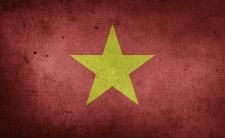
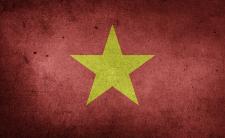
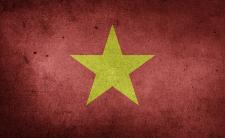
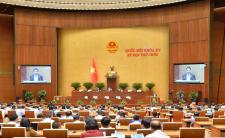
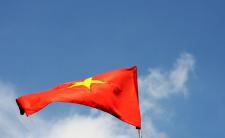
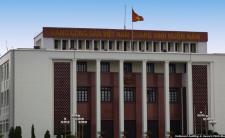
Share this article